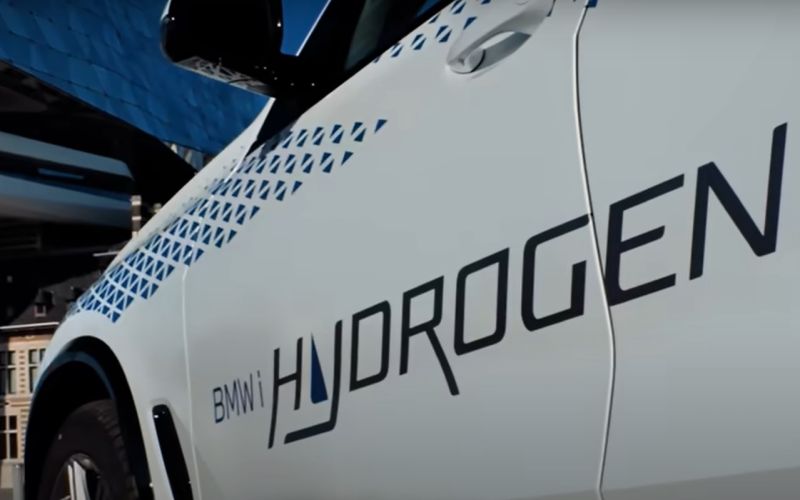Facing The Future: Mitigating The Effects Of Dangerous Climate Whiplash In Cities

Table of Contents
Improving Urban Infrastructure for Climate Whiplash Resilience
Adapting urban infrastructure to withstand the unpredictable impacts of climate whiplash is crucial. This involves a multi-pronged approach targeting key vulnerabilities.
Enhanced Drainage and Flood Management Systems
Investing in robust water management infrastructure is paramount. This includes:
- Investing in green infrastructure: Rain gardens, permeable pavements, and bioswales can absorb excess rainfall, reducing runoff and mitigating flood risks. These nature-based solutions offer cost-effective and environmentally friendly ways to manage stormwater.
- Upgrading drainage systems: Existing drainage systems often struggle to cope with extreme rainfall events. Upgrades should include larger pipes, improved pumping capacity, and the expansion of drainage networks to handle increased volumes of water. Cities like Rotterdam are leading the way in innovative drainage solutions.
- Building robust flood defenses: Seawalls, levees, and other flood barriers can protect vulnerable areas from rising sea levels and storm surges. Regular maintenance and upgrades are crucial to ensure their effectiveness.
These improvements not only reduce flood risks but also create more sustainable and resilient urban environments.
Heat-Resistant Building Materials and Urban Design
The urban heat island effect, where cities are significantly hotter than surrounding areas, is exacerbated by climate whiplash. Mitigating this requires:
- Utilizing reflective materials: Light-colored roofs and pavements reflect sunlight, reducing surface temperatures and minimizing the urban heat island effect.
- Incorporating green spaces and urban forests: Trees and green spaces provide shade, cool the air through evapotranspiration, and reduce energy consumption in buildings. Strategic planting can significantly lower urban temperatures.
- Designing buildings for natural ventilation: Natural ventilation can reduce reliance on air conditioning, lowering energy consumption and improving indoor air quality.
- Improving public transportation access: Reducing reliance on private vehicles decreases greenhouse gas emissions and improves air quality, contributing to a more sustainable and heat-resistant urban environment.
These design choices enhance urban livability and protect public health from extreme heat events.
Strengthening Critical Infrastructure Against Extreme Events
Protecting essential services from climate whiplash is vital. This necessitates:
- Protecting power grids from extreme weather: Investing in underground power lines, strengthening transmission towers, and improving grid resilience can reduce power outages during storms and heatwaves.
- Securing water supplies: Diversifying water sources, improving water storage capacity, and protecting water treatment plants from flooding are essential for ensuring a reliable water supply.
- Reinforcing transportation networks against flooding and high winds: Elevated roadways, improved drainage systems, and stronger bridges can ensure continued transportation access during extreme weather events.
Redundancy and preventative maintenance are crucial to the long-term resilience of these vital systems.
Developing Early Warning Systems and Emergency Preparedness Plans
Effective preparedness is key to minimizing the impact of climate whiplash.
Real-time Weather Monitoring and Predictive Modeling
Accurate and timely information is crucial for effective disaster response. This requires:
- Investing in advanced weather forecasting technology: High-resolution weather models and advanced monitoring systems can provide accurate predictions of extreme weather events, giving cities valuable time to prepare.
- Developing sophisticated early warning systems: These systems should provide timely and accessible warnings to the public, allowing individuals and communities to take necessary precautions.
- Improving communication channels: Utilizing multiple communication channels (text alerts, social media, public announcements) ensures that warnings reach a wide audience, including vulnerable populations.
Real-time data and improved communication are paramount for minimizing casualties and damage.
Community-Based Disaster Preparedness and Response Programs
Community engagement is crucial for effective disaster response. This involves:
- Educating the public on climate risks and emergency preparedness: Public awareness campaigns can help individuals and families prepare for extreme weather events.
- Establishing community emergency response teams: Trained volunteers can assist in emergency response efforts, providing valuable support to first responders.
- Developing evacuation plans and shelter strategies: Well-defined evacuation plans and designated shelters can ensure the safety of residents during extreme weather events.
Active community participation strengthens overall resilience.
Promoting Sustainable Urban Development and Climate Adaptation
Long-term climate resilience requires a commitment to sustainable urban development.
Green Building Codes and Sustainable Urban Planning
Sustainable urban practices reduce vulnerability to climate whiplash:
- Implementing green building standards: Encouraging energy-efficient buildings reduces reliance on energy-intensive cooling and heating systems.
- Promoting energy-efficient buildings: This minimizes energy consumption and carbon emissions, reducing the city's overall impact.
- Incorporating green spaces into urban design: Green spaces help mitigate the urban heat island effect and improve air quality.
- Reducing reliance on private vehicles: Promoting public transportation, cycling, and walking reduces emissions and improves air quality.
These initiatives reduce a city's carbon footprint and enhance its resilience.
Investing in Renewable Energy Sources
Transitioning to renewable energy enhances energy security and reduces emissions:
- Transitioning to renewable energy sources: Solar, wind, and other renewable energy sources reduce reliance on fossil fuels, mitigating greenhouse gas emissions.
- Improving energy efficiency: Reducing energy consumption through efficient appliances and building designs minimizes reliance on energy generation.
- Creating smart grids: Smart grids improve the efficiency and resilience of energy distribution, enhancing the city's ability to handle extreme weather events.
Renewable energy sources are fundamental to building a sustainable and resilient urban future.
Conclusion
Mitigating the effects of climate whiplash in cities requires a comprehensive strategy encompassing improved infrastructure, advanced warning systems, and sustainable urban development. By investing in resilient infrastructure, implementing effective early warning systems, and promoting sustainable urban practices, cities can significantly reduce their vulnerability to the unpredictable impacts of climate change. The urgency of addressing climate whiplash cannot be overstated. Proactive measures are essential to protect urban populations, infrastructure, and economies. By understanding the threats of climate whiplash and actively participating in mitigation efforts, we can build more resilient and sustainable cities for the future. Learn more about how you can contribute to mitigating climate whiplash in your city today!

Featured Posts
-
 Nba 2 K25 Final Update Player Ratings Surge Before Playoffs
May 28, 2025
Nba 2 K25 Final Update Player Ratings Surge Before Playoffs
May 28, 2025 -
 The China Factor How It Affects Bmw Porsche And Other Automakers
May 28, 2025
The China Factor How It Affects Bmw Porsche And Other Automakers
May 28, 2025 -
 El Futuro De Jack Sparrow Depp Y El Productor De Piratas Se Reunen
May 28, 2025
El Futuro De Jack Sparrow Depp Y El Productor De Piratas Se Reunen
May 28, 2025 -
 Walk Off Win For Marlins Stowers Grand Slam Downs Athletics
May 28, 2025
Walk Off Win For Marlins Stowers Grand Slam Downs Athletics
May 28, 2025 -
 Legal Battle Looms As Barrick Challenges Malis Gold Mine Claim
May 28, 2025
Legal Battle Looms As Barrick Challenges Malis Gold Mine Claim
May 28, 2025
